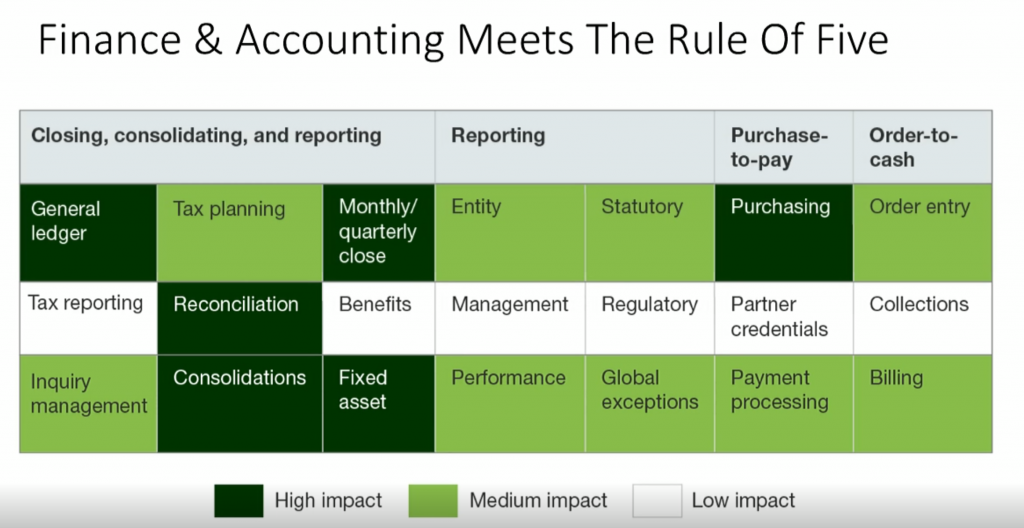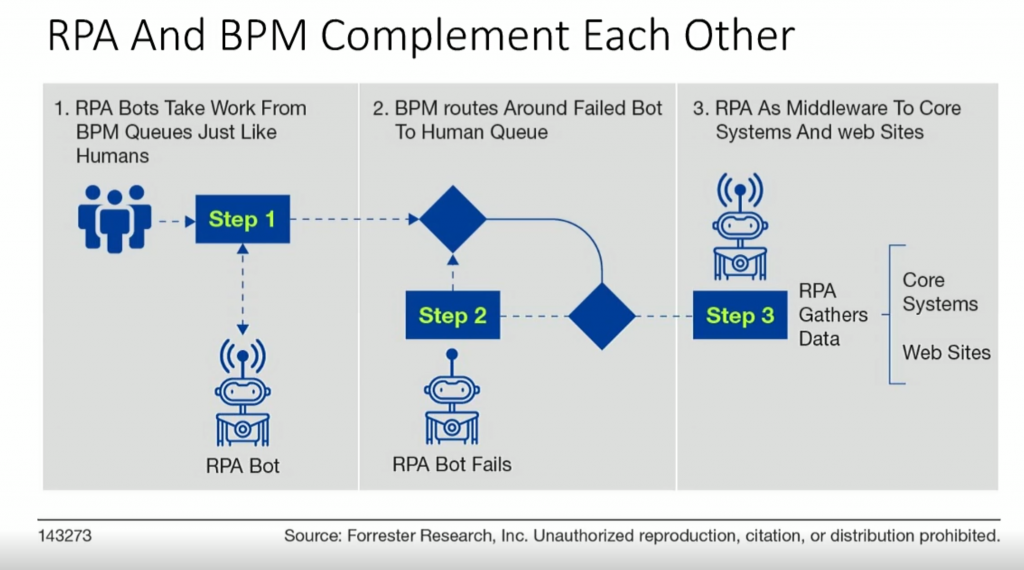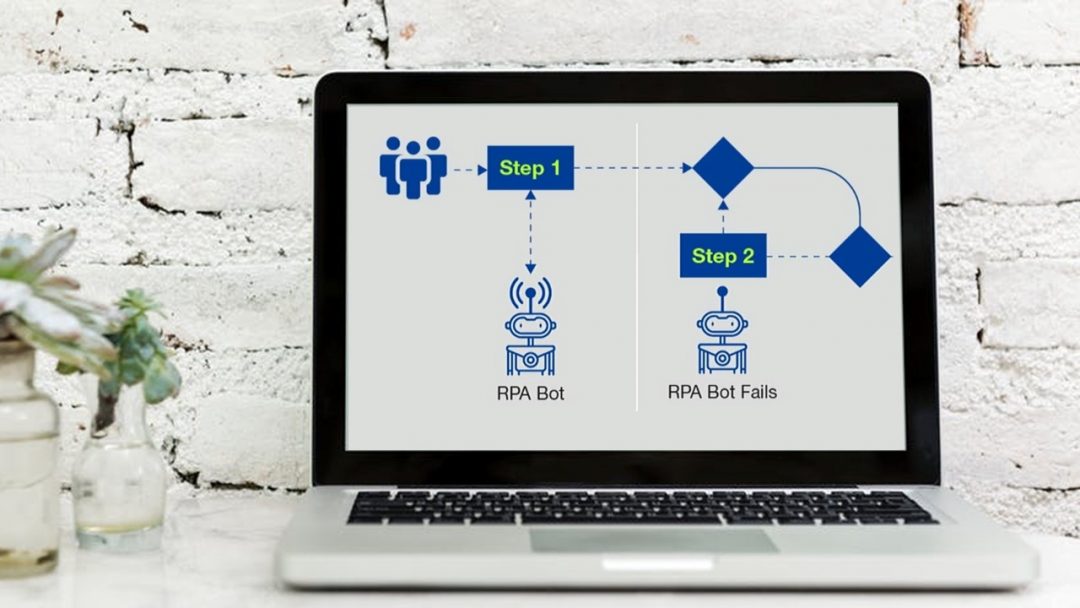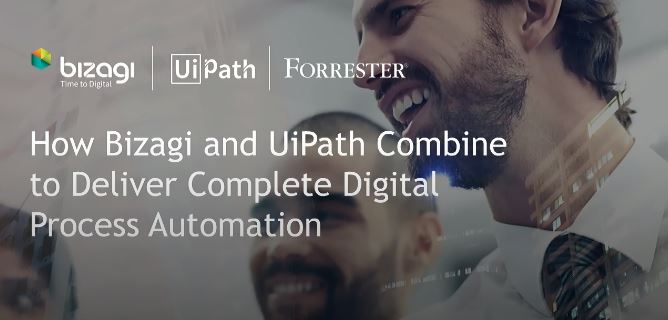How Bizagi & UiPath Combine for Complete Digital Process Automation
Blog: Bizagi Blog
UiPath’s RPA solution is a gateway to the rapid automation of mundane work, freeing humans to work on more cognitive tasks, which is a critical element of digital transformation.
But what’s clear is that RPA is not the complete solution when it comes to process automation. It’s just one of the tools you need to transform your business. This article discusses how the powerful partnership between UiPath and Bizagi’s technologies can help you to deliver complete end-to-end process automation quickly in your business.
Our latest webinar saw Forrester’s Craig Le Clair lead a discussion with UiPath’s Brandon Brown and Bizagi’s Nitish Pargal on the benefits of using RPA alongside an intuitive iBPMS/DPA platform like Bizagi.
If you have some time now it’s well worth watching ‘How Bizagi and UiPath Combine to Deliver Complete Digital Process Automation’ in full, but to help you out we’ve pulled out three key highlights from the session to get you thinking:
1. Look for the Low Hanging Fruit
When considering where to apply RPA in your business, remember that RPA is more about ‘task’ process automation rather than ‘business’ automation. “You need to take a pragmatic approach,” advises Brandon Brown, UiPath. “You don’t need to boil the ocean but there are definitely tasks within any larger process that you will want to automate… there’s lots of low hanging fruit to do some basic task automation that RPA is ripe for.”
But while there are indeed easy wins for RPA, if you want long-term success, it’s worth taking a holistic approach to your automation strategy. Brown also advises using an iBPMS/DPA platform to focus on the end-to-end process automation. Re-orchestrating your processes will help to avoid automating broken processes and deliver greater overall business value.
“[RPA] helps to mature the thinking of how companies approach automation and RPA can help start that conversation and journey,” says Brown.
So how do you find the sweet spot for that initial small project?
2. Use Craig Le Clair’s Rule of Five
Le Clair advises using three rules of five when deciphering where to apply RPA bots:
Less than five decisions made – If decisions become too long, they become complicated to maintain and are not suitable for RPA. For more complex rules, iBPMS/DPA platforms have embedded rules platforms to look at changes to rules and lifecycle management, so they are a better choice than RPA in this instance.
Less than five applications accessed – The talent of RPA is going in and controlling apps directly – not through APIs, but human emulation. RPA deals with direct control, so bots are sensitive when apps change, more so than BPM – so keep the number of applications involved to a minimum.
Less than five hundred clicks – You need a happy path – RPA requires a set of interactions that a human can do and which are repeatable, so you can build a bot that can do this over and over again. Low ability tasks have fewer clicks and are better suited for RPA.
“I really think a combination [of RPA and iBPMS/DPA] makes a lot of sense because one of the issues in the RPA world is the inappropriate application of RPA to processes that violate the rule of 5,” says Le Clair.
“Process skills and understanding how to transform processes… exist in the Business Process Management world, and that’s the kind of context and understanding you need to make the right decisions about where to apply RPA.”

3. RPA and Bizagi complement each other
When you’re setting about deploying RPA, you can combine it with an iBPMS/DPA platform for end-to-end automation. For example, Bizagi can create queues of tasks and then RPA bots can pull down work to complete instead of humans.
A platform like Bizagi’s also acts as a safety net for potential disruptions to RPA. Bots are particularly sensitive to changes to applications which can create performance issues. Bizagi can be used to route around failed bots and move tasks to a queue for a human worker.
RPA is also well-suited to going into core systems and pulling data, populating forms, ordering parts etc. But 80% of apps don’t have APIs. So what RPA does is provide another level of integration capability for an iBPMS/ DPA platform which relies on using APIs and connectors.

So what next?
The combination of Bizagi and UiPath in partnership, both technologies having achieved co-sell-ready status with Microsoft Azure, can help to propel digital transformation in your business through to rapid results, and a foundation for long-term success.
If you’d like to find out more about using Bizagi and RPA together, including more detail on use cases, watch the webinar How DPA and RPA combine to deliver complete automation. And if you have questions about how it could work for you, simply Contact Bizagi today.
The post How Bizagi & UiPath Combine for Complete Digital Process Automation appeared first on Bizagi Blog – Ideas for Delivering Digital Transformation.
Leave a Comment
You must be logged in to post a comment.









